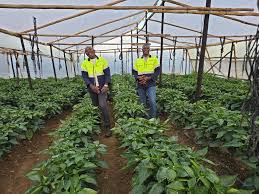The term “Project” has a wider meaning. A project is accomplished by performing a set of activities. For example, the construction of a house is a project. The construction of a house consists of many activities like digging foundation pits, constructing foundations, building walls, constructing roofs, fixing doors and windows, installing sanitary fittings, and wiring.
The construction of a house is accomplished by performing this set of activities. Another aspect of a “project” is the non-routine nature of activities. Each project is unique in the sense that the activities of a project are unique and non-routine.
A project consumes resources. The resources required for completing a project include men, material, money, and time. The nature of resources is that they are limited and scarce. If a person wants to construct a house, the first thing that comes to mind is the financial budget within which the work should be completed.
Thus, resource constraint is a feature of all projects. If one wants to construct a house at an estimated cost of 10 million and within a period of six months, the project should be completed subject to these constraints. Thus, a project can be defined as an organised programme of a pre-determined group of activities that are non-routine in nature and must be completed using the available resources within the given time limit.
According to Harison, a project can be defined as a non-routine, non-repetitive, one-off undertaking, normally with discrete time, financial, and technical performance goals. The Project Management Institute, USA, defines a project as “a system involving the coordination of a number of separate department entities throughout the organisation and which must be completed within prescribed schedules and time constraints.”
According to the Encyclopaedia of Management, a project is “an organised unit dedicated to the attainment of a goal—the successful completion of a development project on time, within budget, and in conformance with pre-determined programme specifications.”
According to Little & Mirrless, a project is any scheme or part of a scheme for investing resources that can be reasonably analysed and evaluated as an independent unit.
Though project management is in the process of evolving as a separate branch of study, projects are not new to the world. One of the Seven Wonders of the World, the Pyramids, dates back to 2650 BC, standing as a hallmark of Egyptian civilisation.
The construction period of the Taj Mahal, another wonder of the world, is reported to be between 1626 and 1648 A.D. It is reported that about 20,000 persons worked for nearly 22 years to complete this spectacular structure, which stands today as mankind’s proudest creation. One can imagine the extent of resources and expertise that would have been put forth for the completion of such magnificent projects.
Read Also: Anemone Flowers – All you need to know
Project Management in Agriculture and Beyond

Project management is an organised venture for managing projects. It involves the scientific application of modern tools and techniques in planning, financing, implementing, monitoring, controlling, and coordinating unique activities or tasks to produce desirable outputs in accordance with pre-determined objectives within the constraints of time and cost.
Project management consists of the following stages:
i. Project Planning.
ii. Project Scheduling.
iii. Project Implementation, Controlling, and Monitoring.
Every person, organisation, and nation is concerned with project management. An individual builds a house it is their project. They perform marriages for their children these are also projects undertaken in their lifetime.
An organisation sets up a new factory it is a project for the organisation. The government of a country builds highways, dams, thermal power plants, hydroelectric power plants, airports, etc. These are all projects that the country undertakes.
Project management as a technique is assuming greater importance since it aims at the optimum utilisation of resources. Every person practises project management in their day-to-day life. When a person uses the shortest route to reach their office, it involves all the stages of project management, namely planning, scheduling, implementing, controlling, and monitoring.
They plan for the shortest route, schedule their starting time, and control the speed of their vehicle to reach their destination on time. By choosing the shortest route, they try to optimise fuel usage for their car and reach the office in the shortest possible time.
When a government plans to build an express highway connecting two important cities covering a distance of several kilometres, it is a project of greater magnitude than the construction of a house.
As a project becomes larger in magnitude, its complexities with regard to planning, scheduling, implementing, controlling, and monitoring increase. For effective management of larger and complex projects, systematically devised techniques are followed.
Project management has grown into a separate branch of management since traditional management techniques are found inadequate to handle projects effectively.
Managing projects requires specialised forms of organisational structure, specialised techniques that aid in the completion of projects within the time frame and budget, and managers who have the skills required to use appropriate project management techniques to handle the special nature of human relations problems specific to projects.
Read Also: Winter Aconite Flowers (Eranthis hyemalis) – All you need to know
Examples of Projects in Agriculture and Other Sectors

Projects can be large or small and involve one person or thousands of people. They can be completed in one day or take years to finish. Examples of projects include the following:
i. A young couple hires a firm to design and build them a new house.
ii. A retail store manager works with employees to display a new clothing line.
iii. A college campus upgrades its technology infrastructure to provide wireless internet access.
iv. A construction company designs and constructs a new office building for a client.
v. A school implements new government standards for tracking student achievement.
vi. A group of musicians starts a company to help children develop their musical talents.
vii. A pharmaceutical company launches a new drug.
viii. A television network develops a system to allow viewers to vote for contestants and provide feedback on programs.
ix. The automobile industry develops standards to streamline procurement.
x. A government group develops a program to track child immunizations.
Key Attributes of a Project
Projects come in all shapes and sizes. The following attributes help to define a project further:
1. Unique Purpose: Every project should have a well-defined objective. For example, many people hire firms to design and build a new house, but each house, like each person, is unique.
2. Temporary Nature: A project has a definite beginning and a definite end. For instance, for a home construction project, owners usually have a specific date in mind for when they want to move into their new homes.
3. Progressive Elaboration: Projects are often broadly defined at the start, and as time passes, the details become clearer. For example, preliminary house plans are drafted for approval before more detailed plans are developed.
4. Resource Requirements: Projects require a variety of resources, such as people, hardware, software, or other assets. Building a home typically needs different types of skills and resources from various areas.
5. Primary Customer or Sponsor: Most projects have multiple stakeholders, but one person or entity must take on the primary sponsorship role. The project sponsor usually provides direction and funding.
6. Uncertainty: Since every project is unique, it can be challenging to clearly define objectives, estimate completion time, or determine costs. External factors, like a supplier going out of business, can also introduce uncertainty.
Project Constraints in Agricultural and Other Projects
Every project is constrained in different ways. Some project managers focus on scope, time, and cost constraints. These limitations are sometimes referred to in project management as the triple constraint. To create a successful project, a project manager must consider scope, time, and cost and balance these often-competing goals. The following must be considered:
1. Scope: What work will be done as part of the project? What unique product, service, or result does the customer or sponsor expect?
2. Time: How long should it take to complete the project? What is the project’s schedule?
3. Cost: What should it cost to complete the project? What is the project’s budget? What resources are needed?
Other people focus on the quadruple constraint, which adds quality as a fourth constraint:
i. Quality: How good does the quality of the products or services need to be? What is needed to satisfy the customer?
ii. Risk: How much uncertainty is acceptable on the project?
Why Projects Matter in Agriculture and Economic Development

Projects create productive assets. It is only through projects that resources are converted into productive assets. Since projects convert idle resources into productive assets, they act as prime movers of economic development in any country.
In the process of creating productive assets, projects optimise resource allocation. Since projects can be successfully completed only with focused attention on goals by the project team members, they create an environment for participatory endeavours.
From an organisation’s perspective, projects act as a means for consolidating the experience and expertise of organisational members effectively, creating a learning environment, encouraging team spirit, and helping to achieve organisational objectives.
As businesses become more competitive, the focus of organisations shifts towards ensuring customer satisfaction. This can be achieved by cutting costs, improving quality, enhancing product features, and ensuring timely delivery.
Though mass production has advantages in terms of cost reduction, when every player in the field switches to mass production, cost differences between organisations narrow.
To win in such a situation, there needs to be a shift towards custom production of products and services to meet specific customer requirements. Such a situation requires a team-based approach, making project management the only option.
Projects automation and office automation cut down lengthy organisational hierarchies and reduce the need for middle management and supervisory staff. Instead, employees are assigned specific problems like improving product features, designing new products, or finding cost-effective production techniques. All such specific and time-bound issues can be effectively handled only by project-based organisations.
As organisations handle more projects (necessitated by the changing business scenario), bureaucratic organisational setups with large hierarchies will eventually give way to team-based setups where project teams are formed to execute specific projects.
Once the project is completed, the team is dissolved, and a new team is formed to handle the next project. Thus, handling organisational activities as a combination of many projects has become a standard practice.
.Do you have any questions, suggestions, or contributions? If so, please feel free to use the comment box below to share your thoughts. We also encourage you to kindly share this information with others who might benefit from it. Since we can’t reach everyone at once, we truly appreciate your help in spreading the word. Thank you so much for your support and for sharing!
Read Also: How to Make Your Own Organic Pesticides






